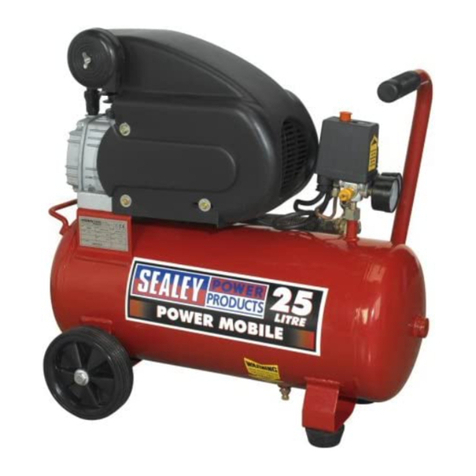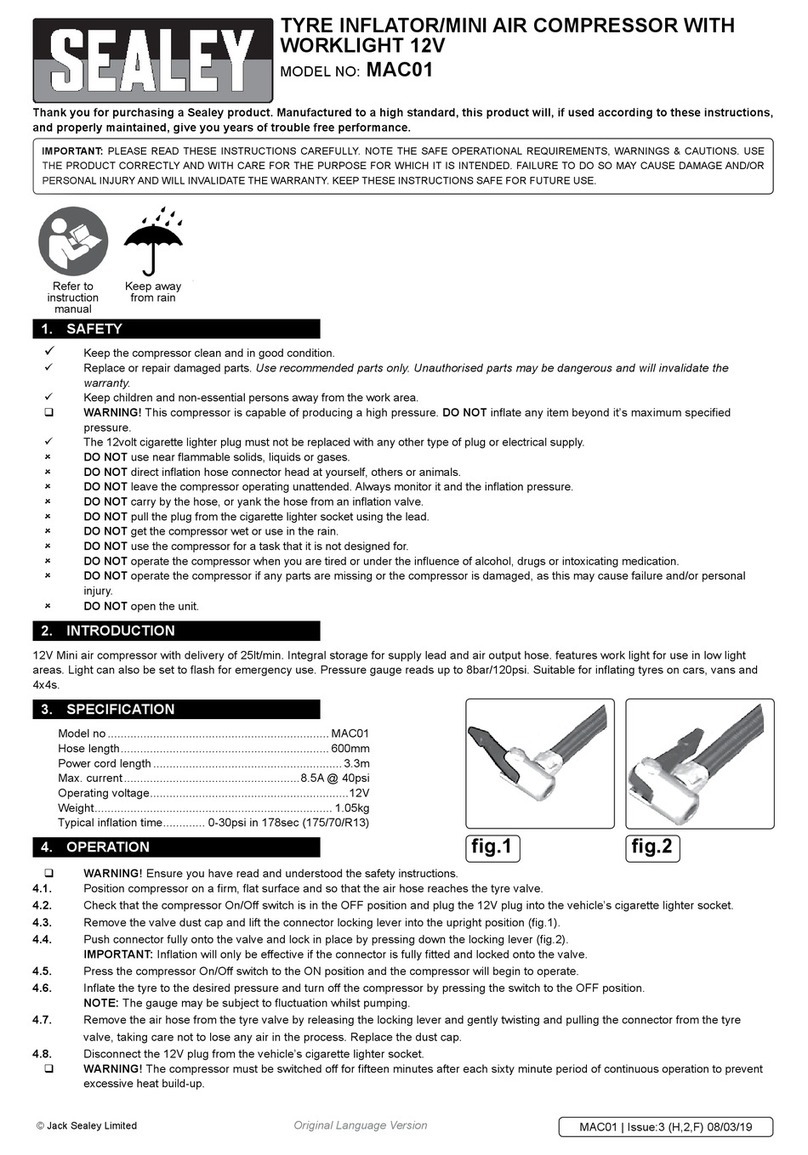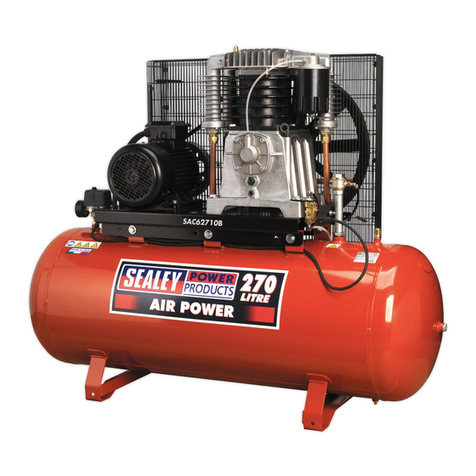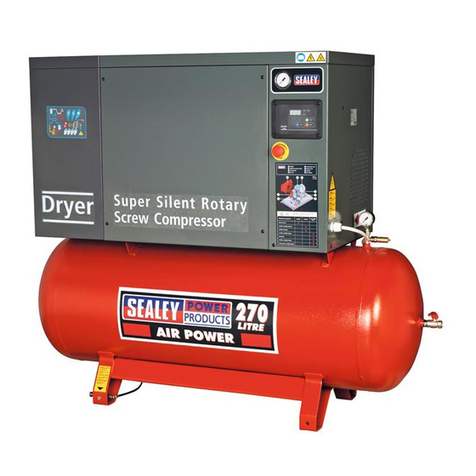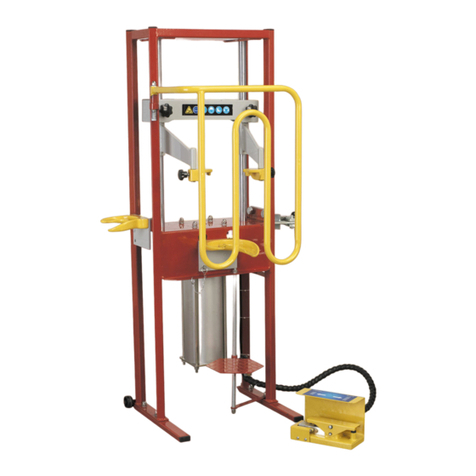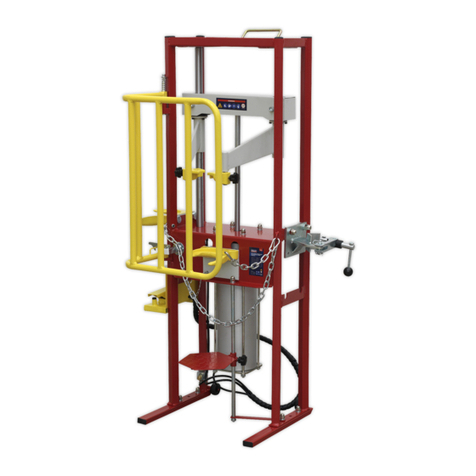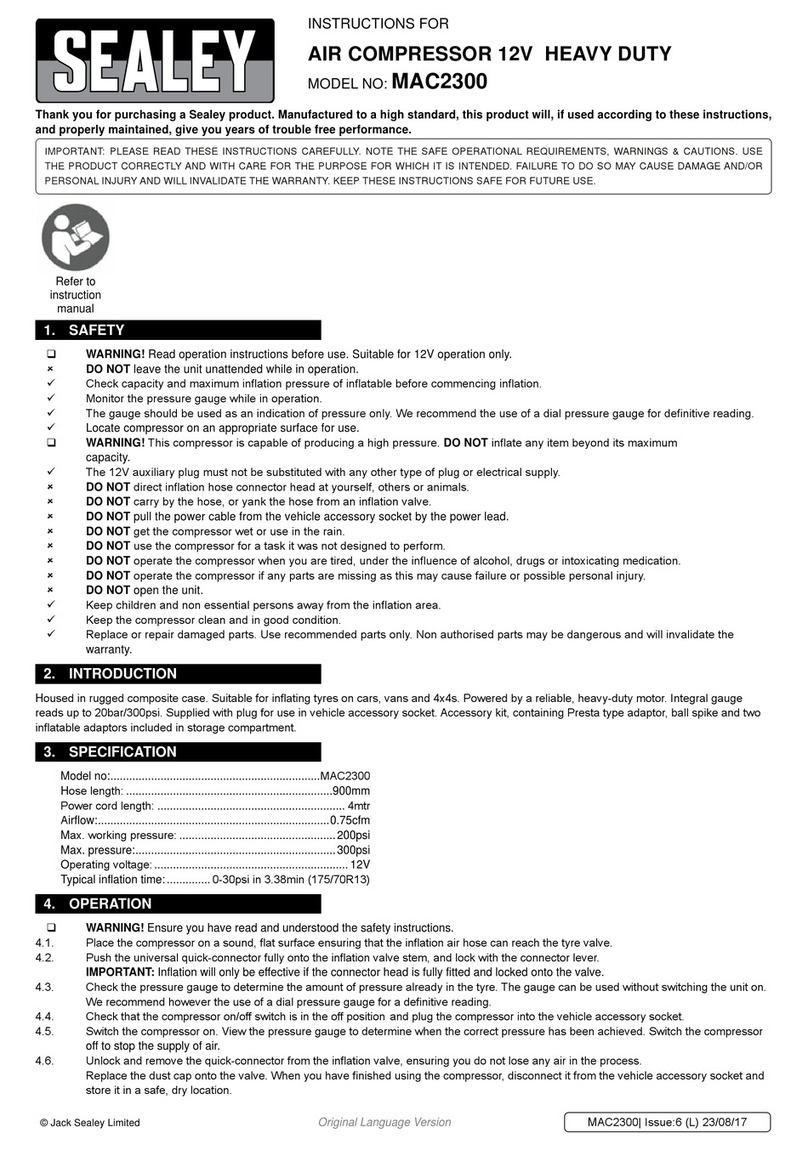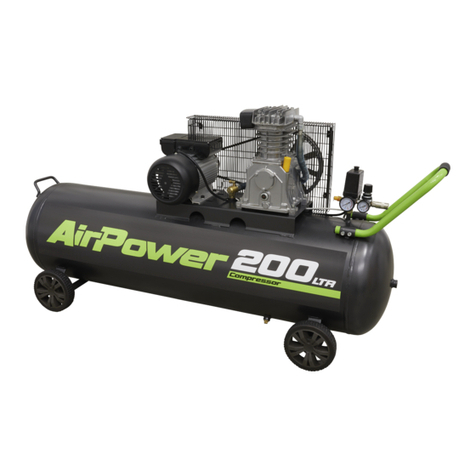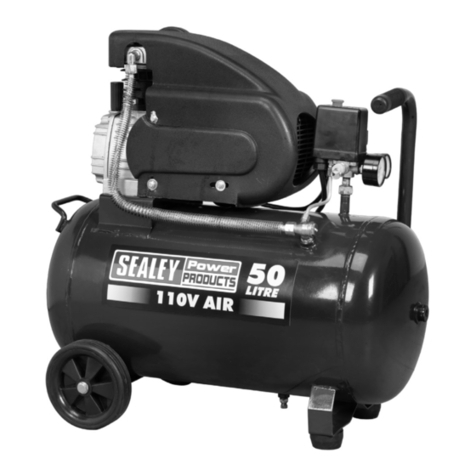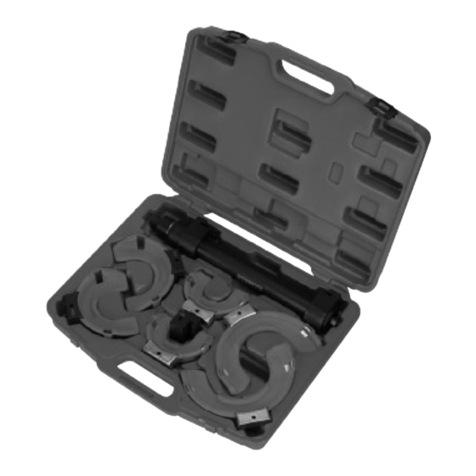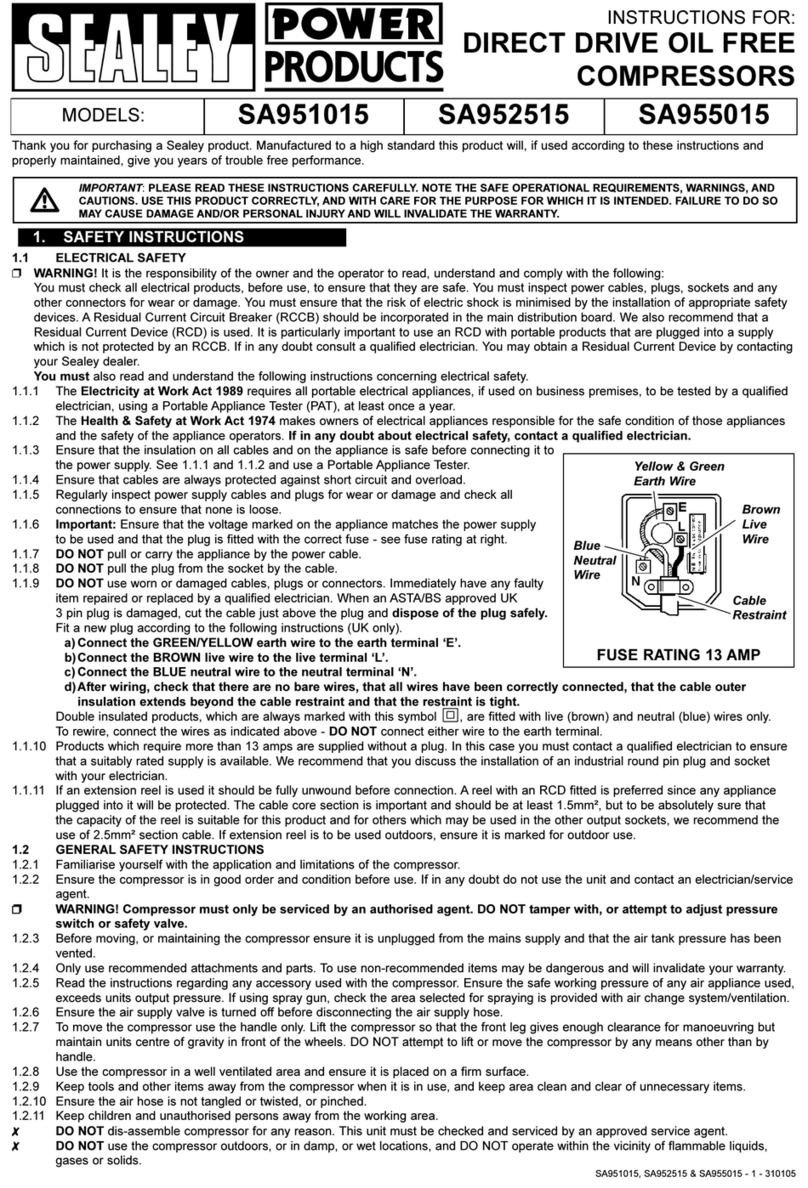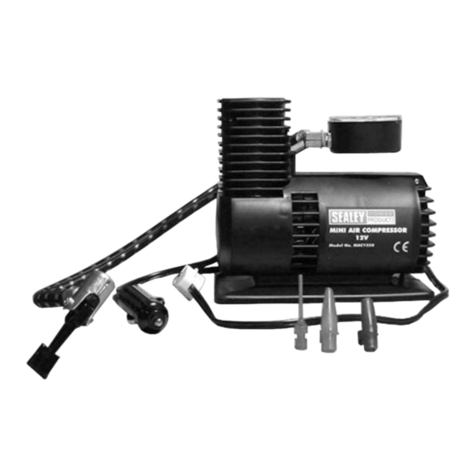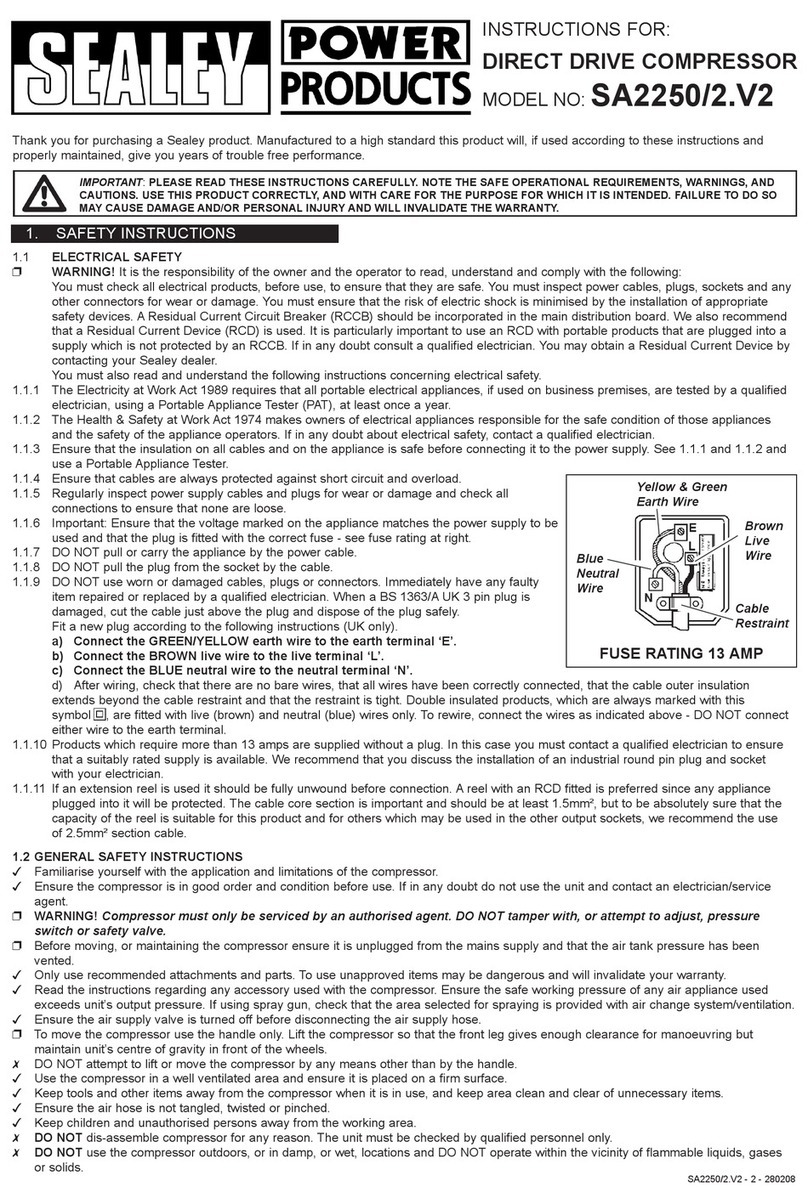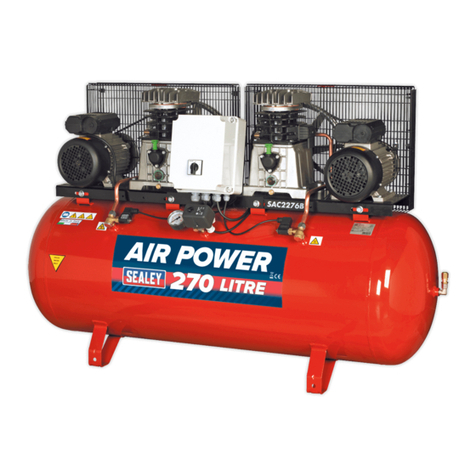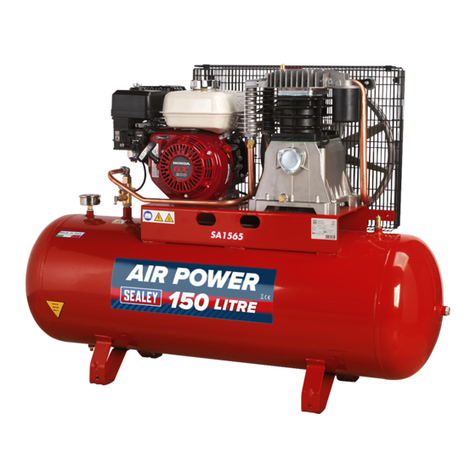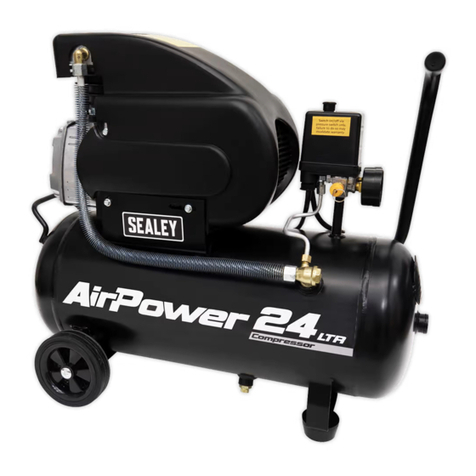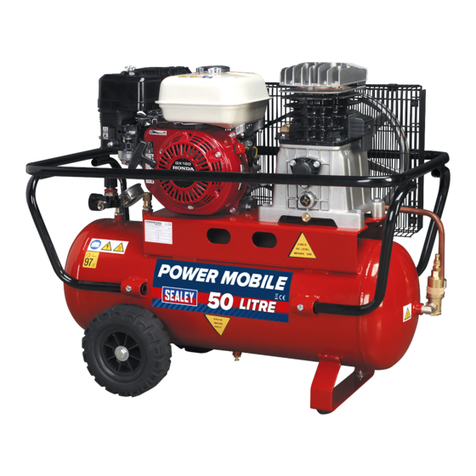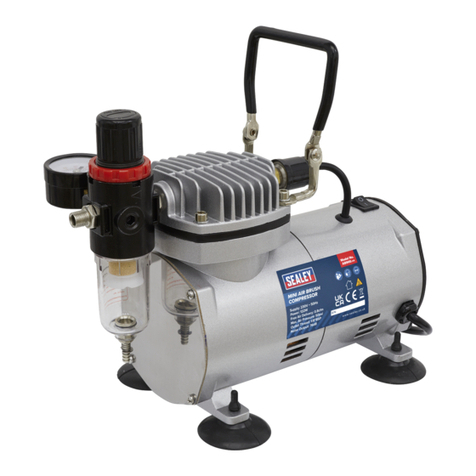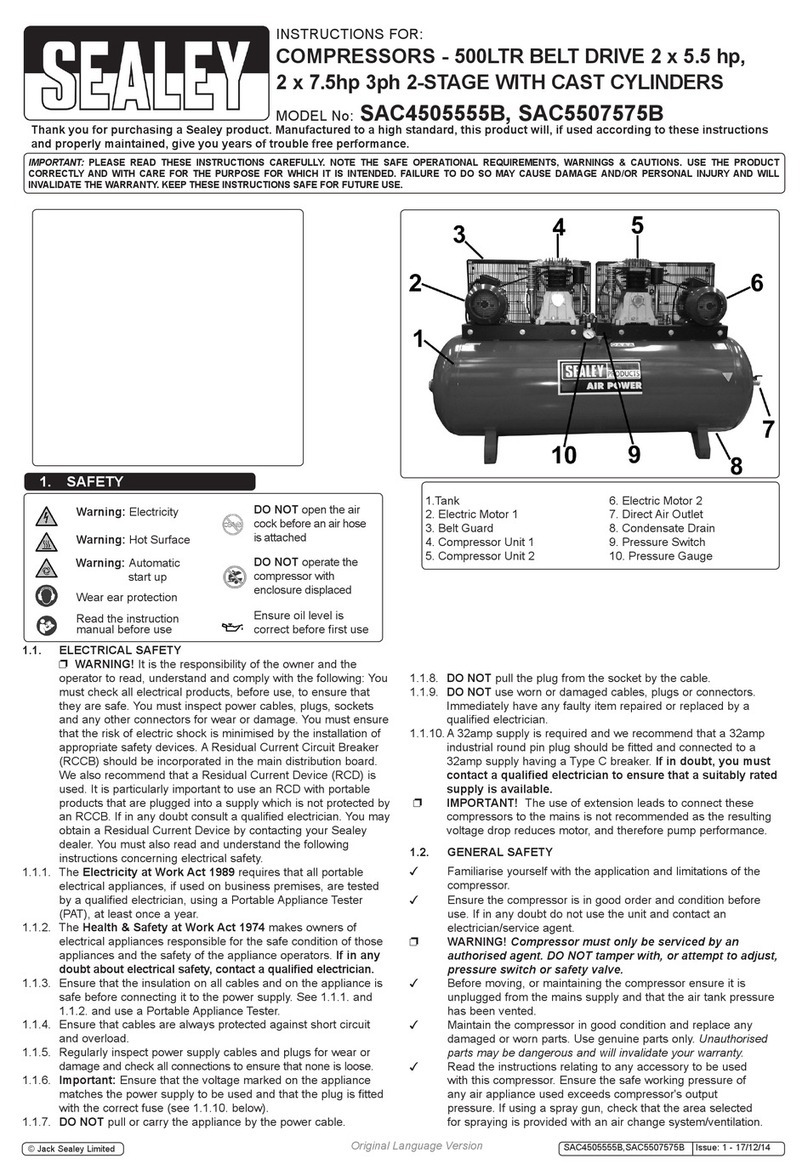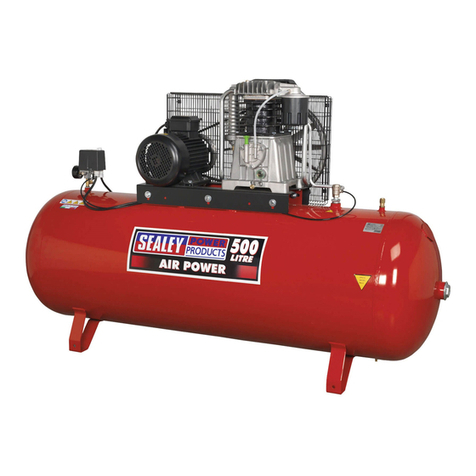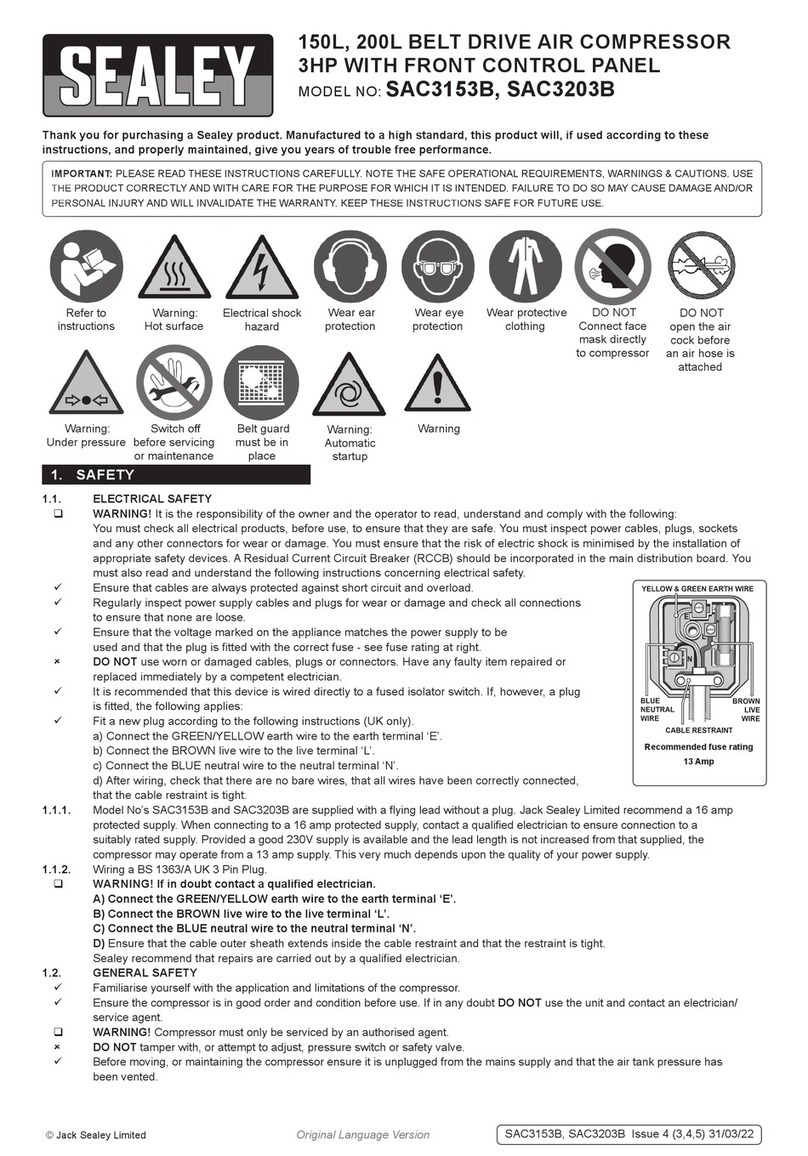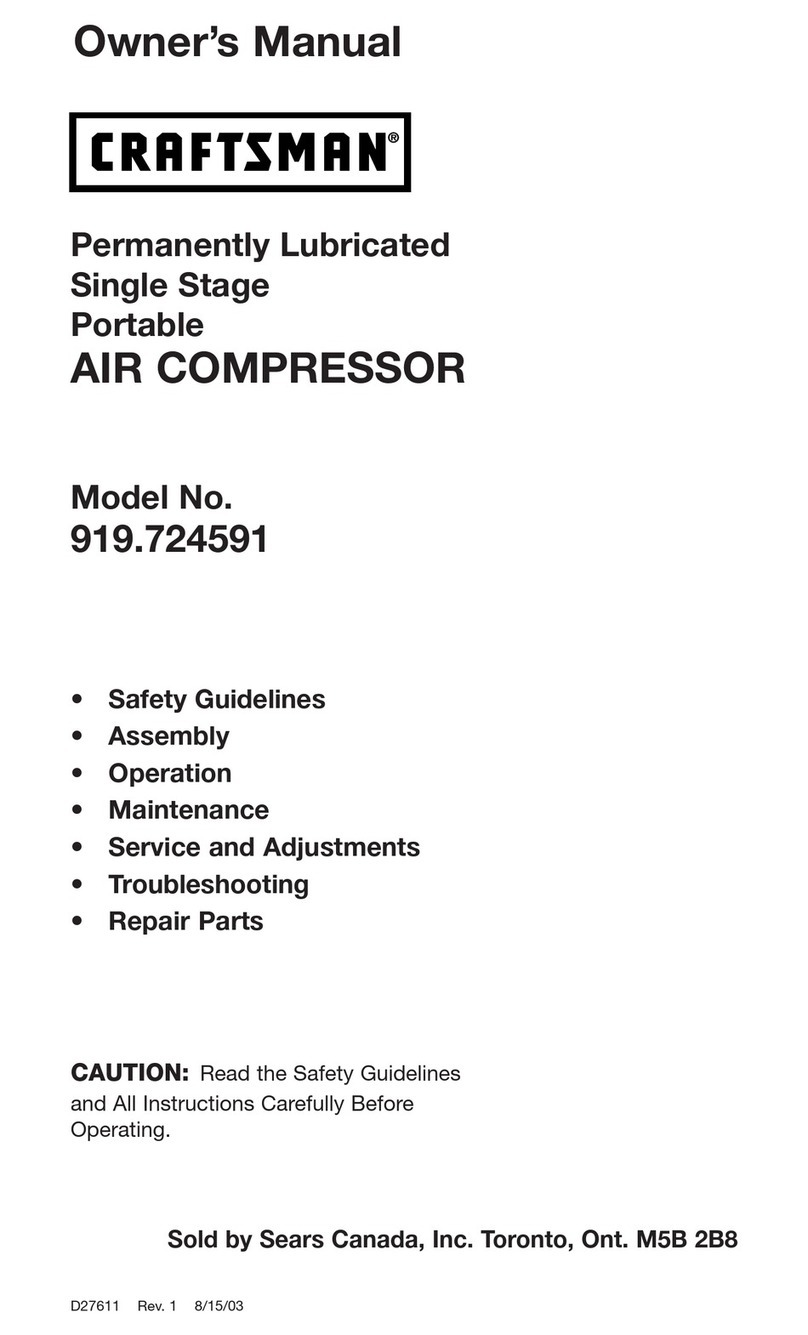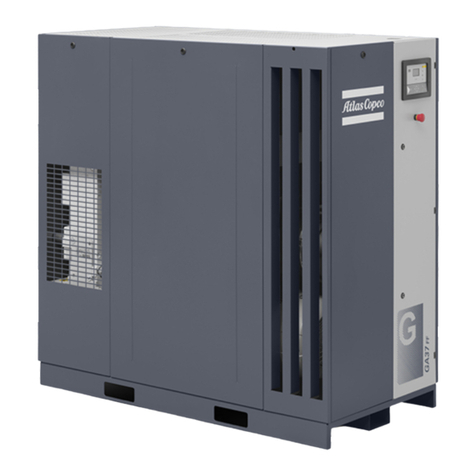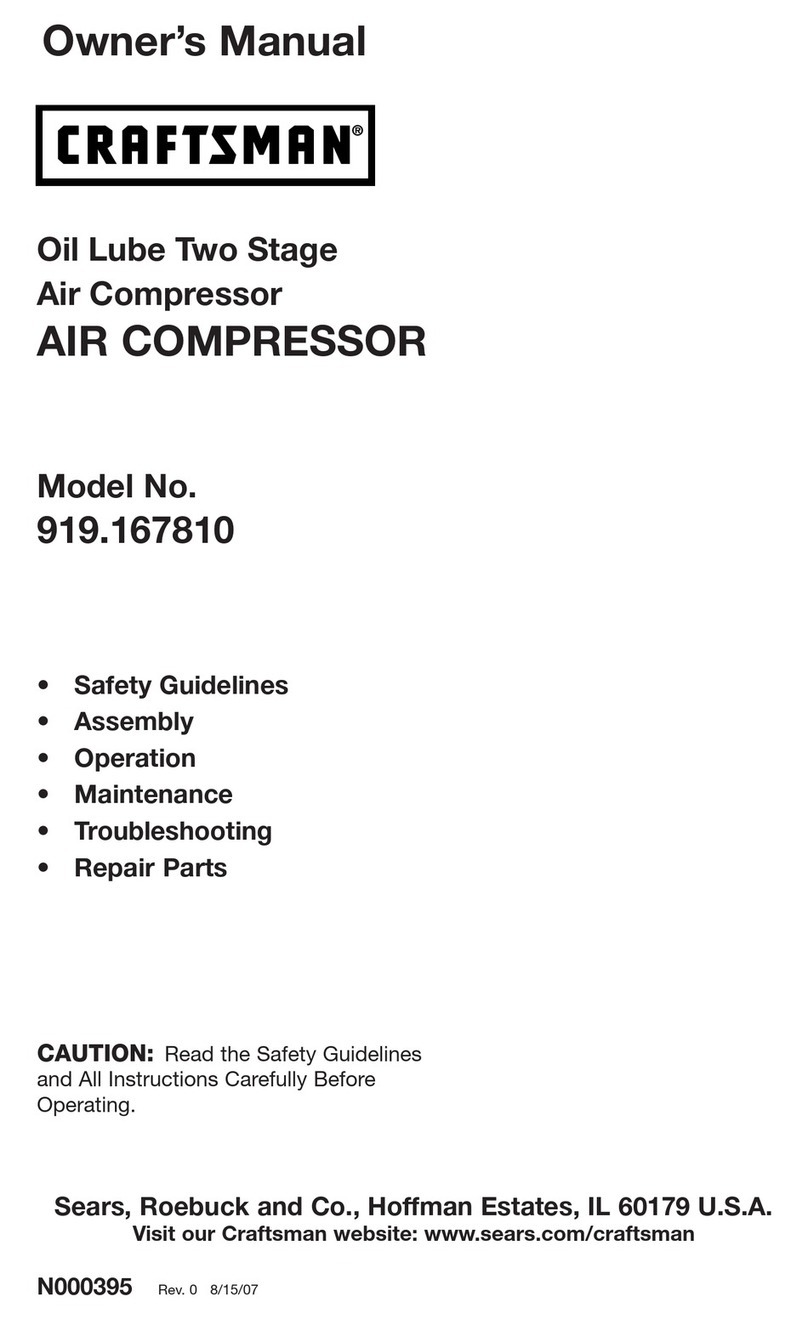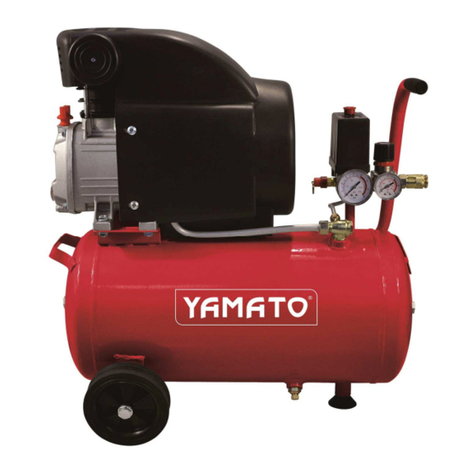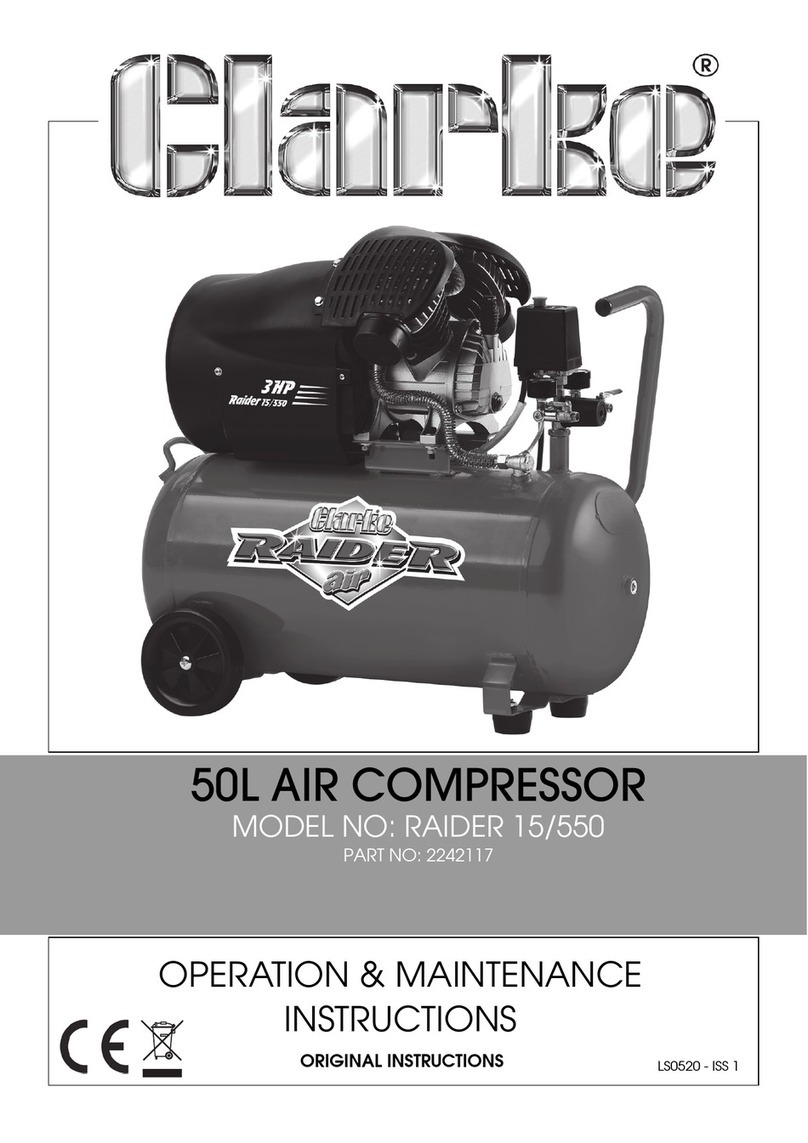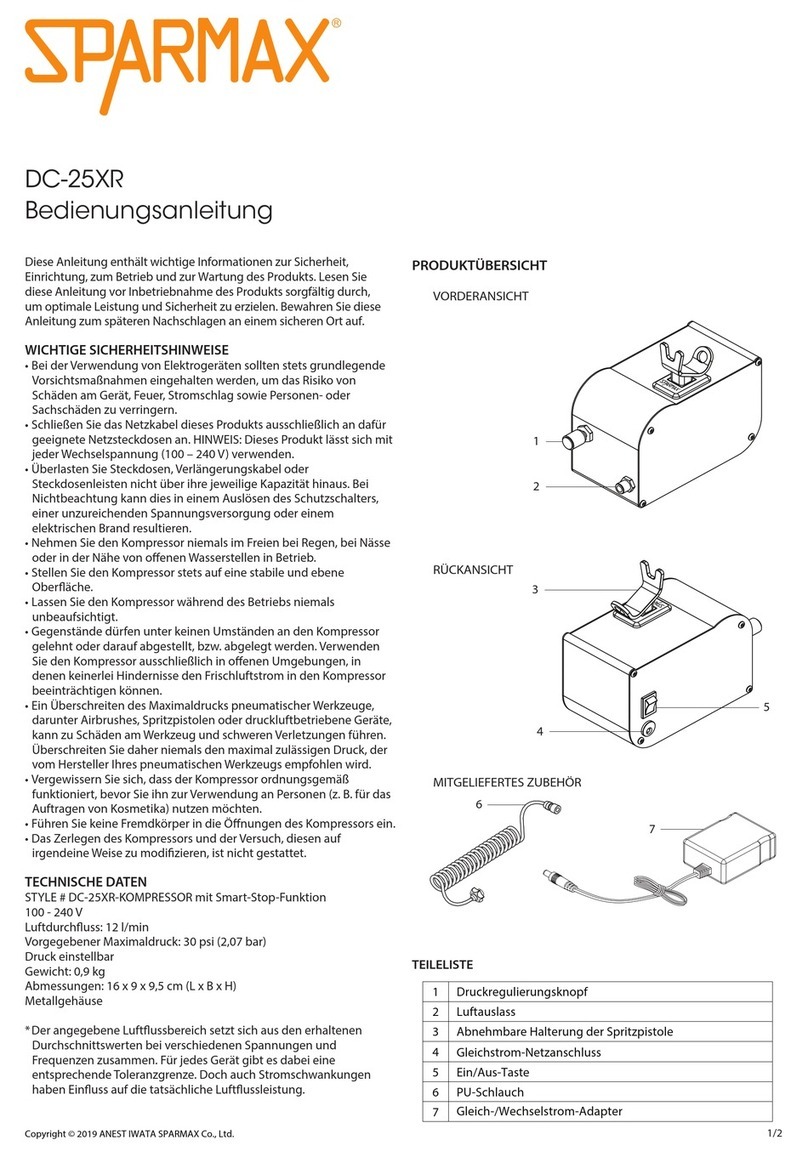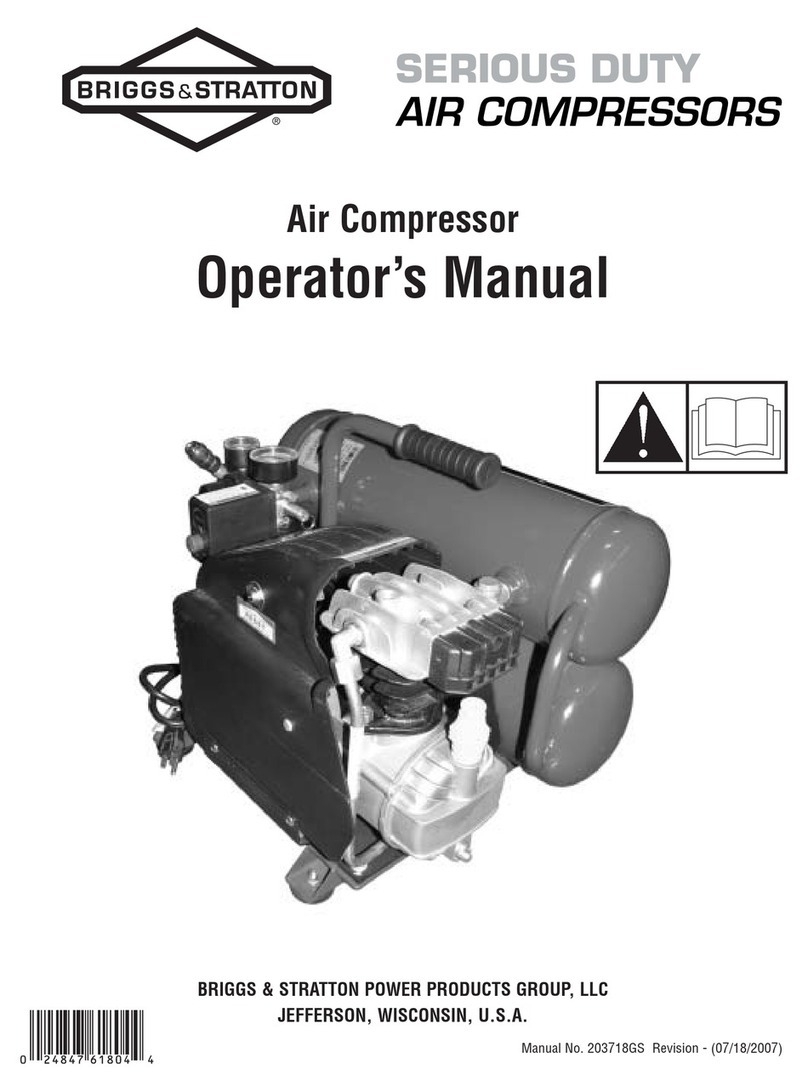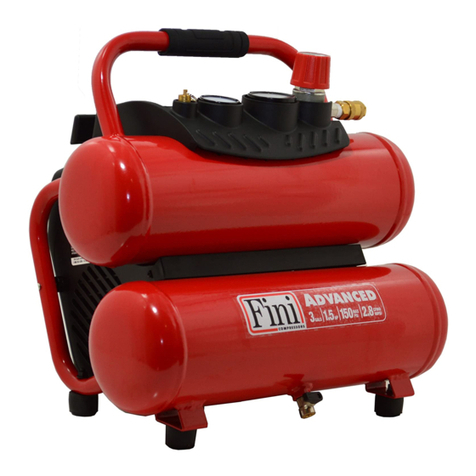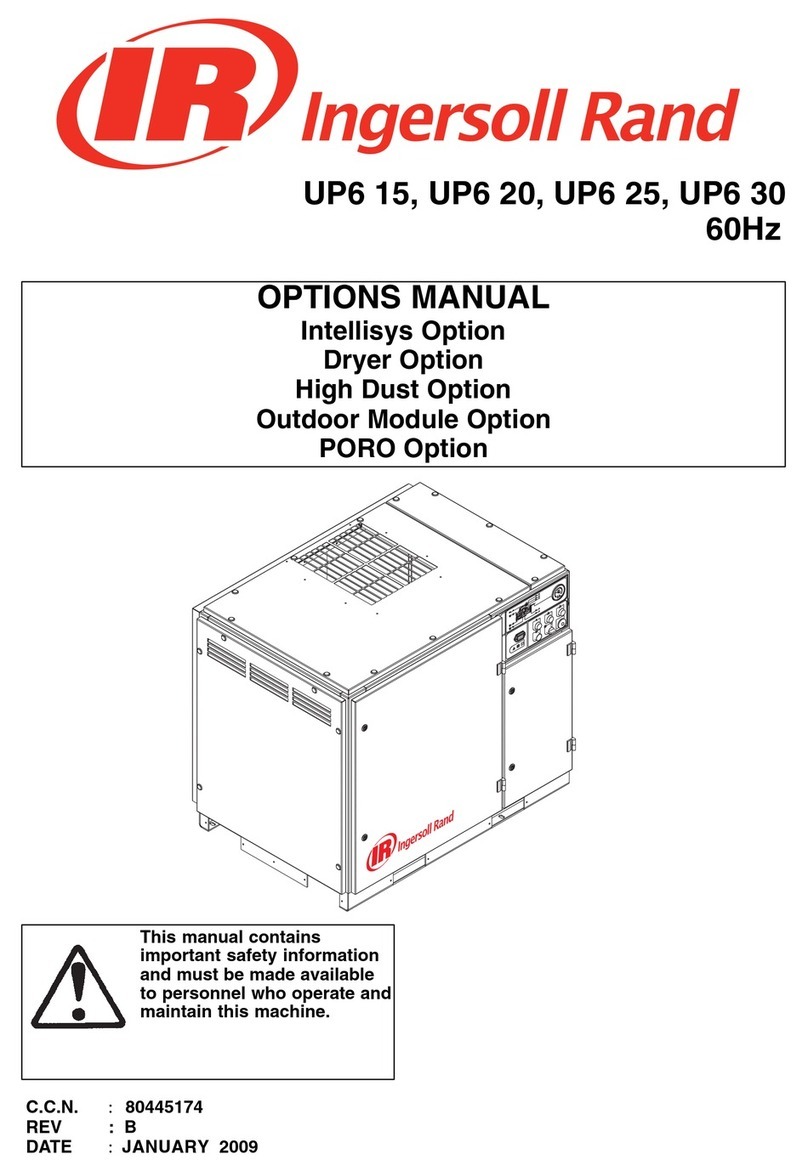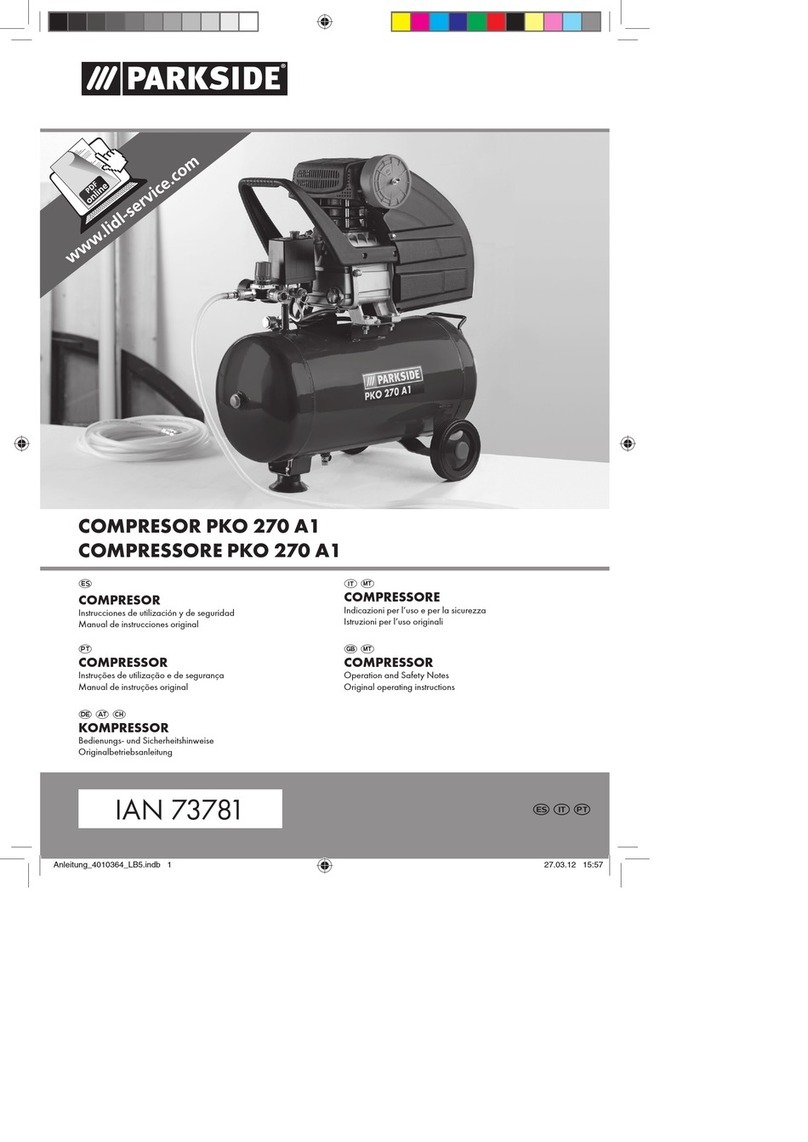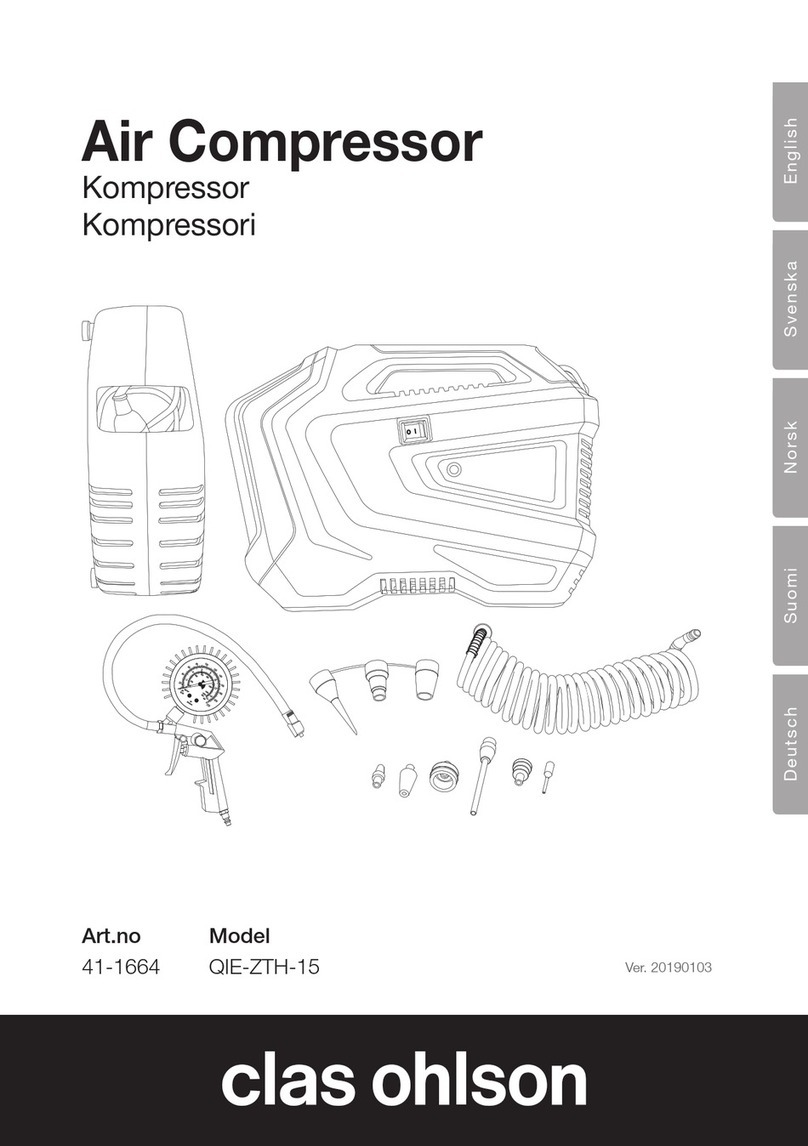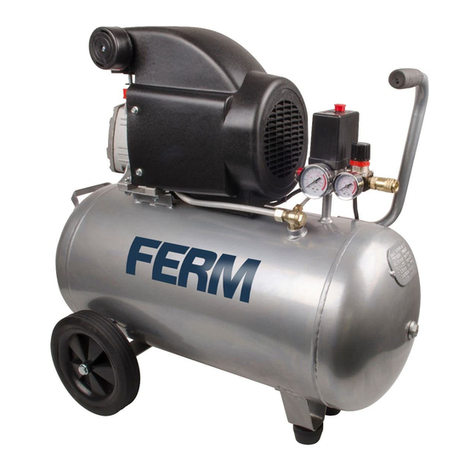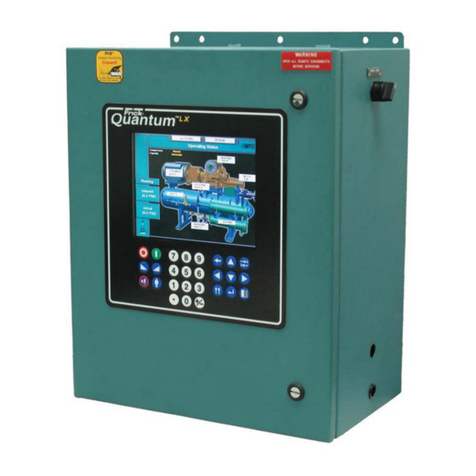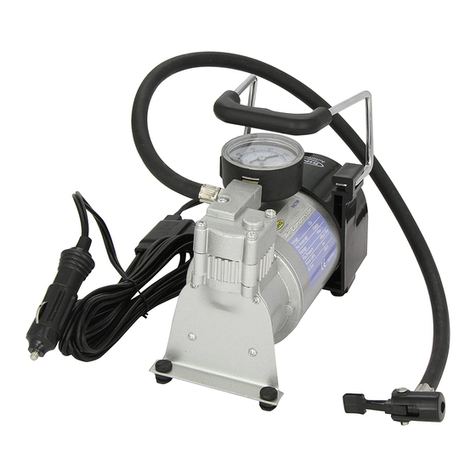
8. TROUBLESHOOTING
4 PC AIR ACCESSORY KIT
SUPPLIED WITH MODEL NO: SAC5020EPK.V2
9. SPRAY GUN SAFETY
WARNING! Disconnect the spray gun from the air supply before changing accessories, servicing or performing any maintenance.
9Familiarise yourself with this products application and limitations, as well as the specific potential hazards peculiar to the spray gun.
Paint cup remains pressurised after gun is disconnected from air line.
8DO NOT pull the trigger, but release the pressure by gently opening cup.
9Maintain the spray gun in good condition (use an authorised service agent).
9Replace or repair damaged parts. Use recommended parts only. Non authorised parts may be dangerous and will invalidate the
warranty.
9Locate the spray gun in an adequate working area for its function, keep area clean and tidy and free from unrelated materials, and
ensure there is adequate ventilation and lighting.
9Keep the spray gun clean for best and safest performance.
9Wear approved respiratory protection and safety eye goggles.
9Remove ill fitting clothing. Remove ties, watches, rings, and other loose jewellery, and tie back long hair.
9Keep children and unauthorised persons away from the working area.
9Avoid unintentional operation.
8DO NOT point spray gun at yourself, at other persons or animals.
8DO NOT carry the by the air hose, or pull the hose from the air supply.
8DO NOT use the spray gun for any purpose other than for which it is designed.
8DO NOT allow untrained persons to operate the spray gun.
8DO NOT get the spray gun wet or use in damp or wet locations or areas where there is condensation.
8DO NOT operate gun if any parts are missing or damaged as this may cause failure or personal injury.
8DO NOT direct air from the air hose at yourself or others.
9 When not in use switch the spray gun off, and disconnect from the air supply.
10. TYRE INFLATOR SAFETY
9Disconnect the gauge from the air supply before changing accessories, servicing or performing any maintenance.
9Maintain the gauge in good condition (use an authorised service agent), and keep the gauge clean for best and safest performance.
9Replace or repair damaged parts. Use recommended parts only. Unauthorised parts may be dangerous and will invalidate
the warranty.
9Locate gauge in a suitable work area, keep area clean and tidy and free from unrelated materials and ensure there is adequate lighting.
9Keep children and unauthorised persons away from the work area.
8DO NOT direct gauge outlet at yourself or at other persons or animals.
8DO NOT carry by the hose, or yank the hose from the air supply.
8DO NOT use the gauge for a task which it is not designed to perform.
8DO NOT operate the gauge when you are tired or under the influence of alcohol, drugs or intoxicating medication.
8DO NOT operate gauge if parts are missing or the gauge is damaged, as this may cause failure and/or personal injury.
FAULT CAUSE REMEDY
1A) Pressure drop in the tank Air leaks at connections Run compressor to max. pressure, switch off
Brush soap solution over connections and look for
bubbles. Tighten connections showing leaks
If problem persists contact Authorised Service Agent
1B) Pressure drop in the tank Air leaks from safety valve Operate the safety valve manually by pulling on the
ring. If valve continues to leak when in the closed
position it should be replaced
1C) Pressure drop in the tank Air leaks from cylinder head gasket Check tightness of head bolts. If leak continues
contact Authorised Service Agent
2) Pressure switch valve leaks when
compressor is idle
Non-return valve seal defective Empty the air tank. Referring to fig.6, remove the
non-return valve cap (3), spring (2) and seal (1)
Clean the seal and its seat, or if necessary replace
the seal
3) Air leaks from tank body or tank welds Internal corrosion caused by infrequent tank
draining or non permitted modifications to tank
Tank could rupture or explode. Cannot be repaired
DISCONTINUE USE IMMEDIATELY
4A) Motor stops and will not restart Thermal cut out has operated Allow unit to cool for 30 minutes, then press reset
see fig.7.
4B) Motor stops and will not restart Supply fuse has tripped Reset fuse and restart unit. If repeated tripping
occurs replace the check valve or contact
authorised service agent
5) Compressor stops and does not restart Motor failure Contact Authorised Service Agent
6A) Compressor does not stop at max. pressure Pressure switch fault Contact Authorised Service Agent
6B) Compressor does not stop at max. pressure Filter clogged
Head gasket or valve fault
Replace filter element.
Contact Authorised Service Agent
7) Compressor noisy with metallic knock Bearing or piston damage Contact Authorised Service Agent
8) Excessive moisture in discharged air High humidity environment Drain tank after each use
Original Language Version
© Jack Sealey Limited SAC5020E.V3, SAC5020EPK.V2 Issue 1 13/06/19





